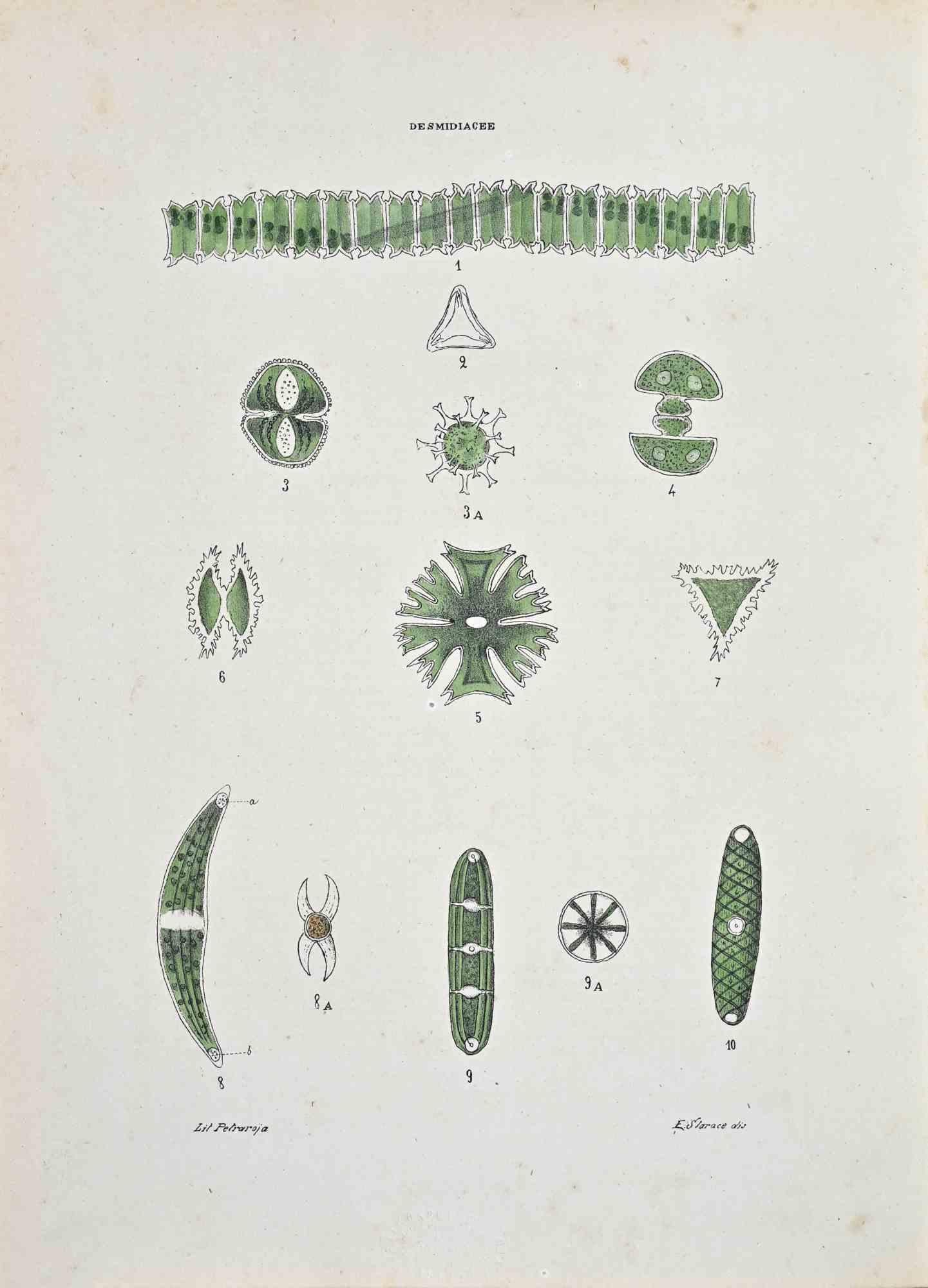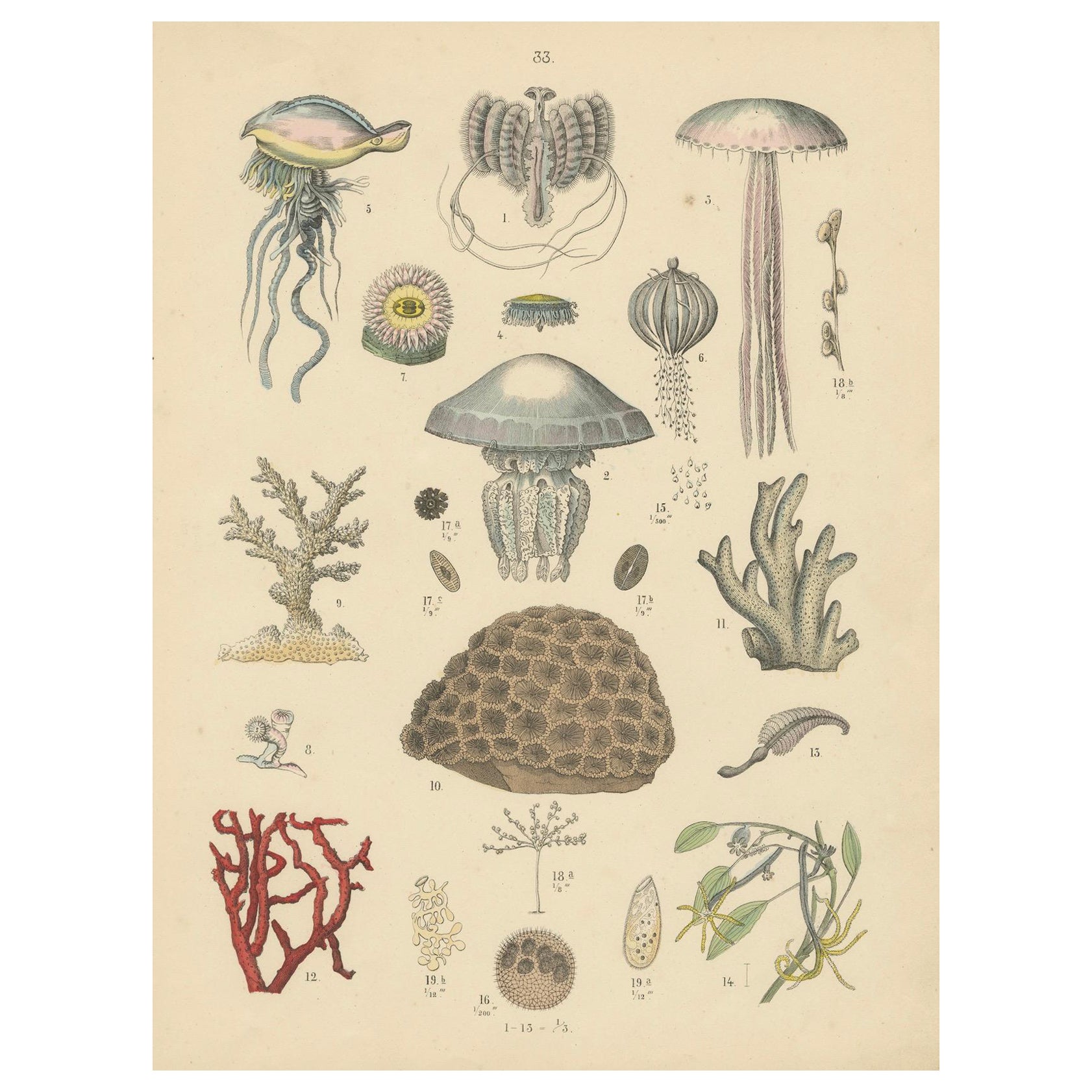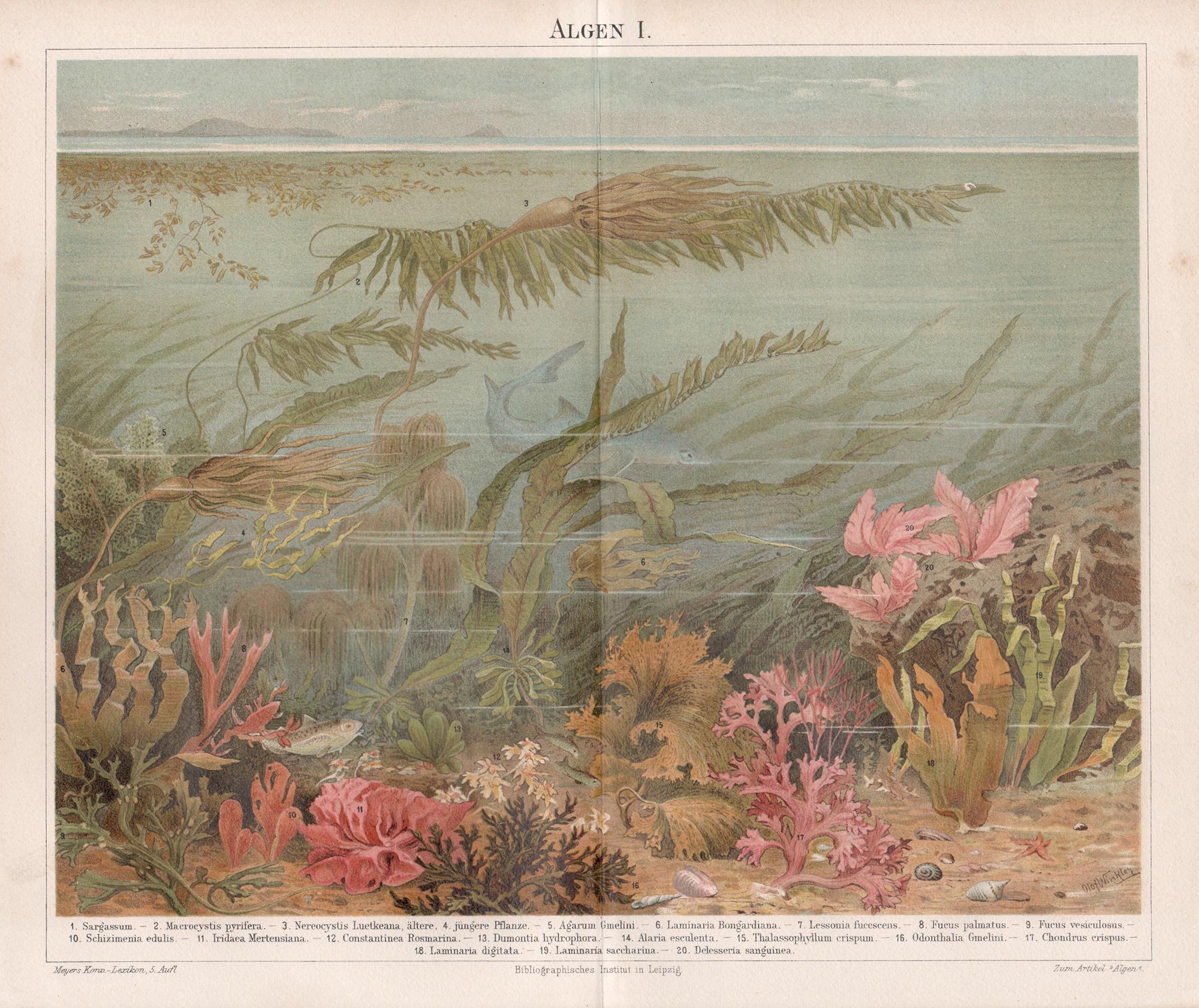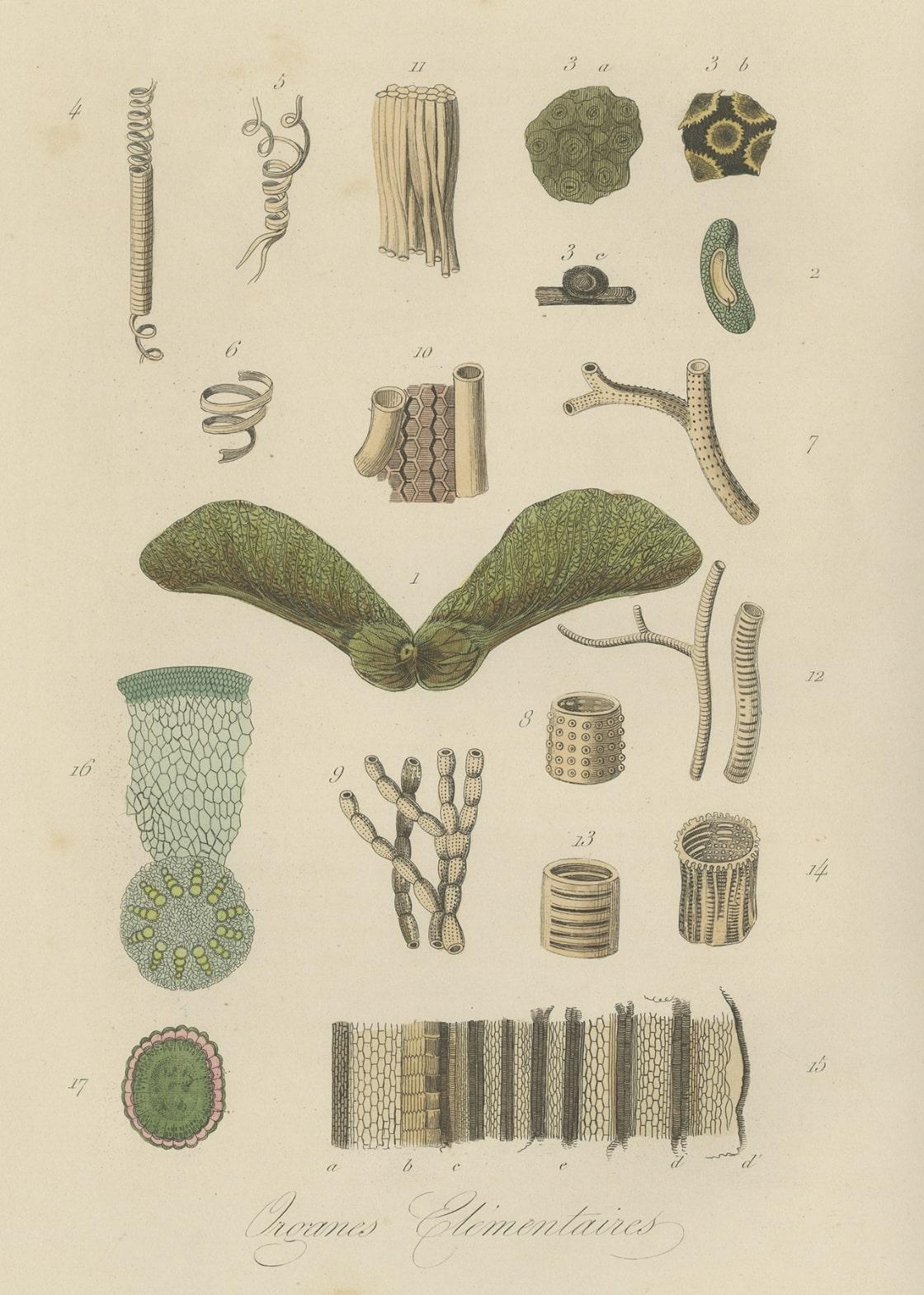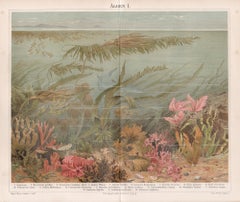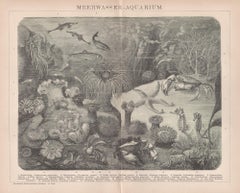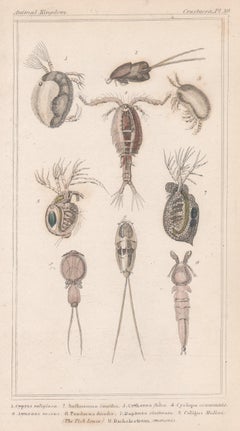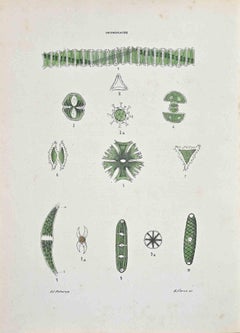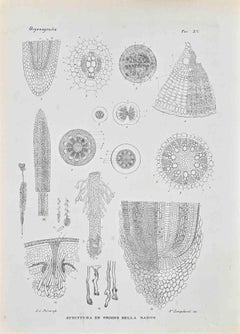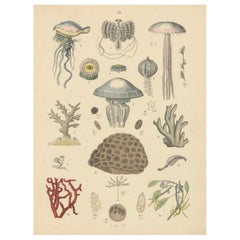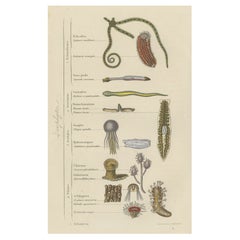Items Similar to Strahlinge (Protozoa - Radiolarians or Radioza) German antique lithograph print
Want more images or videos?
Request additional images or videos from the seller
1 of 3
UnknownStrahlinge (Protozoa - Radiolarians or Radioza) German antique lithograph print1895
1895
$65
£49.05
€56.16
CA$91.67
A$100.64
CHF 52.51
MX$1,217.93
NOK 658.08
SEK 620.09
DKK 419.21
About the Item
'Strahlinge'
(Protozoa - Radiolarians or Radioza)
German lithograph, circa 1895. Key to protozoa in German below the image.
250mm by 305mm (sheet).
Central vertical fold as issued.
- Creation Year:1895
- Dimensions:Height: 9.85 in (25 cm)Width: 12.01 in (30.5 cm)
- Medium:
- Movement & Style:
- Period:
- Condition:Central vertical fold as issued. A few tiny spots.
- Gallery Location:Melbourne, AU
- Reference Number:1stDibs: LU1244213906632
About the Seller
5.0
Platinum Seller
Premium sellers with a 4.7+ rating and 24-hour response times
Established in 2005
1stDibs seller since 2019
613 sales on 1stDibs
Typical response time: <1 hour
- ShippingRetrieving quote...Shipping from: Melbourne, Australia
- Return Policy
Authenticity Guarantee
In the unlikely event there’s an issue with an item’s authenticity, contact us within 1 year for a full refund. DetailsMoney-Back Guarantee
If your item is not as described, is damaged in transit, or does not arrive, contact us within 7 days for a full refund. Details24-Hour Cancellation
You have a 24-hour grace period in which to reconsider your purchase, with no questions asked.Vetted Professional Sellers
Our world-class sellers must adhere to strict standards for service and quality, maintaining the integrity of our listings.Price-Match Guarantee
If you find that a seller listed the same item for a lower price elsewhere, we’ll match it.Trusted Global Delivery
Our best-in-class carrier network provides specialized shipping options worldwide, including custom delivery.More From This Seller
View AllSeaweeds, German antique underwater botanical chromolithograph print
Located in Melbourne, Victoria
'Algen I'
(Seaweeds)
German chromolithograph, circa 1895. Central vertical fold as issued.
240mm by 305mm (sheet)
Category
Late 19th Century Naturalistic Animal Prints
Materials
Lithograph
Meerwasser - Aquarium, German antique underwater sea life engraving
Located in Melbourne, Victoria
'Meerwasser - Aquarium'
German tinted wood-engraving, circa 1895.
245mm by 305mm (sheet).
Central vertical fold as issued.
Category
Late 19th Century Naturalistic Animal Prints
Materials
Lithograph
Crustaceans - cyclops etc, antique English natural history engraving print, 1837
Located in Melbourne, Victoria
'Crustacea'
Copper-line engraving with original hand-colouring. From Baron Georges Cuvier's (1769-1832) 'Animal Kingdom', published in London in 1837.
210mm by 130mm (sheet)
Category
Mid-19th Century Naturalistic Animal Prints
Materials
Engraving
Human Eye, German antique medical anatomy wood-engraving print
Located in Melbourne, Victoria
'Auge des Menschen'
(Human Eye)
German wood-engraving, circa 1895. Central vertical fold as issued.
240mm by 305mm (sheet)
Category
Late 19th Century Naturalistic More Prints
Materials
Engraving
Lycoperdon Echinatum, Leuba antique mushroom fungi food chromolithograph print
Located in Melbourne, Victoria
'1-6 Lycoperdon Echinatum 7-11 Scleroderma Verrucosum' (Spiny puffball mushroom and Scaly earth ball)
Antique Swiss mushroom / fungi chromolithograph, lith...
Category
Late 19th Century Naturalistic Still-life Prints
Materials
Lithograph
Ubersichtskarte Des Mondes (Overview Map of the Moon), antique astronomy print
Located in Melbourne, Victoria
'Ubersichtskarte Des Mondes'
(Overview Map of the Moon)
German chromolithograph, circa 1895.
245mm by 305mm (sheet).
Central vertical fold as issued.
Category
Late 19th Century Naturalistic Still-life Prints
Materials
Lithograph
You May Also Like
The Desmiadaceae - Lithograph by Vincenzo Tenore - 1870s
Located in Roma, IT
Lithograph hand watercolored.
Plate from "Atlante di Botanica popolare ossia Illustrazione di Piante Notevoli di ogni famiglia" (Atlas of popular botany or illustration of notable p...
Category
1870s Modern Figurative Prints
Materials
Lithograph
Organography - Lithograph by Vincenzo Tenore - 1870s
Located in Roma, IT
Lithograph.
Plate from "Atlante di Botanica popolare ossia Illustrazione di Piante Notevoli di ogni famiglia" (Atlas of popular botany or illustration of notable plants of each fami...
Category
1870s Modern Figurative Prints
Materials
Lithograph
Corals & Jellyfish Print: Medusa, Anemone, Corals, Ctenophores – Antique 1867
Located in Langweer, NL
Corals & Jellyfish Print: Medusa, Sea Anemone, Corals, Ctenophores – Antique 1867
This detailed antique print depicts a range of marine invertebrates, including jellyfish, Portugues...
Category
Antique 1860s German Prints
Materials
Paper
Interesting and Decorative Antique Print of Various Zoophytes, 1854
Located in Langweer, NL
Antique print titled 'Zoophytes'. Print of various zoophytes. This print originates from 'Musée d'Histoire Naturelle' by M. Achille Comte.
Artists and Engravers: Published by Gus...
Category
Antique 19th Century Prints
Materials
Paper
$211 Sale Price
20% Off
Decorative Antique Print of Nature of Various Organisms, 1854
Located in Langweer, NL
Antique print titled 'Organes Elémentaires'. Print of various organisms. This print originates from 'Musée d'Histoire Naturelle' by M. Achille Comte.
Artists and Engravers: Publi...
Category
Antique 19th Century Prints
Materials
Paper
$211 Sale Price
20% Off
Palmellee Algae - Lithograph by Vincenzo Tenore - 1870s
Located in Roma, IT
Lithograph hand watercolored.
Plate from "Atlante di Botanica popolare ossia Illustrazione di Piante Notevoli di ogni famiglia" (Atlas of popular botany or illustration of notable p...
Category
1870s Modern Figurative Prints
Materials
Lithograph
More Ways To Browse
Antique German Prints
Antique German Lithographs
Picasso Lithograph 1961
Sculptures Of Acrobats
C I Honig
Cowboy Lithograph
Elizabeth Gould Birds
Francois Louis Schmied
Homage To Dufy
Humorous Art Prints
Jean Marais Lithograph
Martinet Hand Prints
Pablo Picasso Sketches
Puffin Prints
Stan Washburn
Thomas Hart Benton Exhibition Poster
Woodblock Bird Prints
Blue Dog Tiffany
